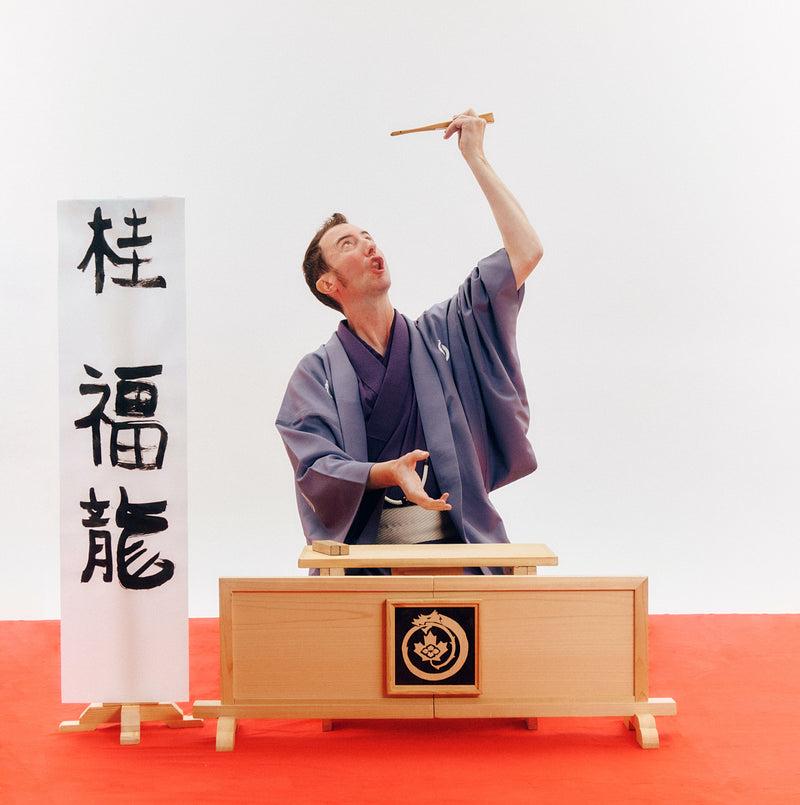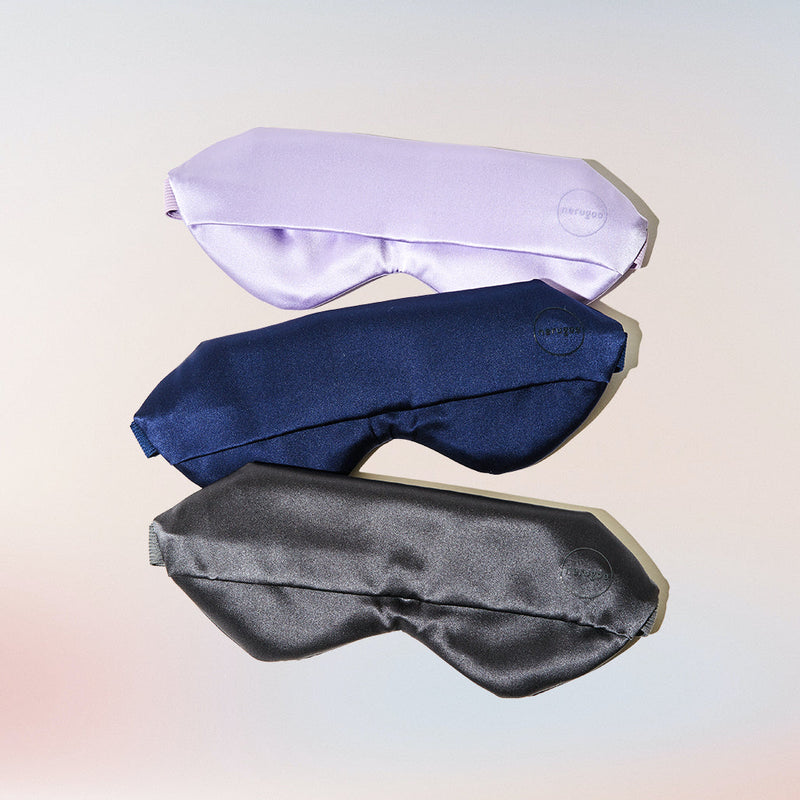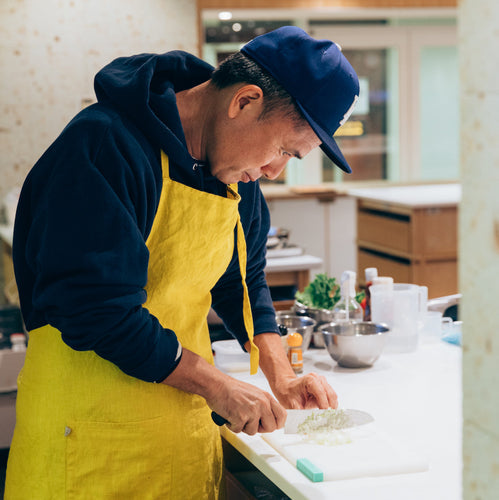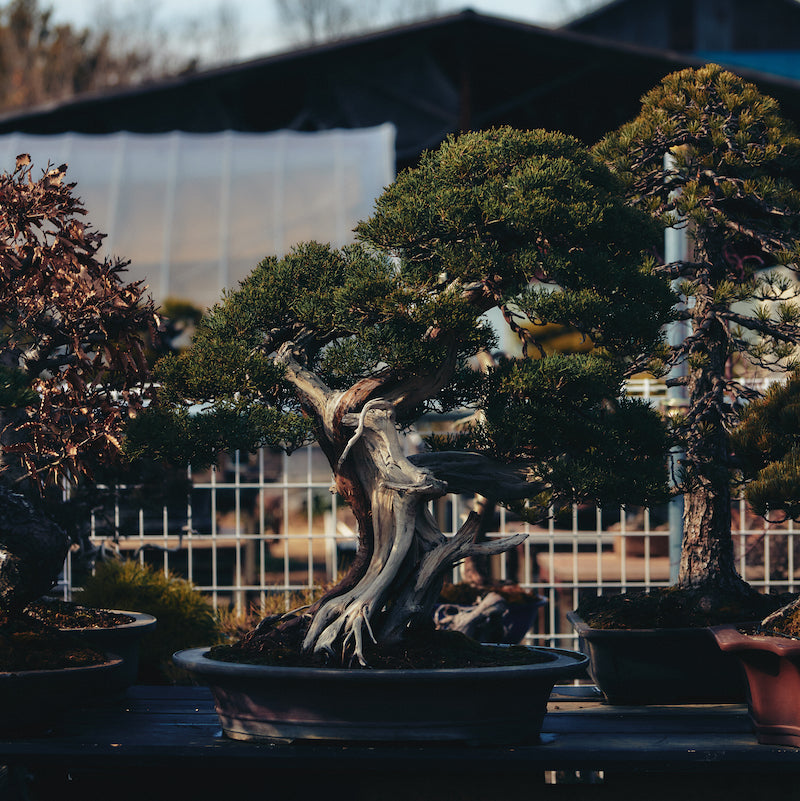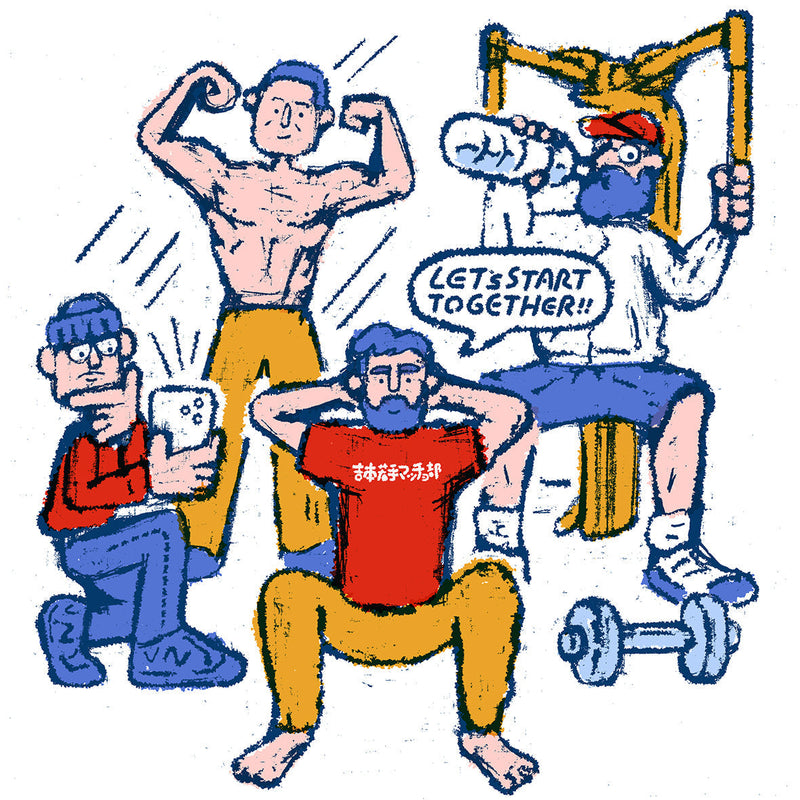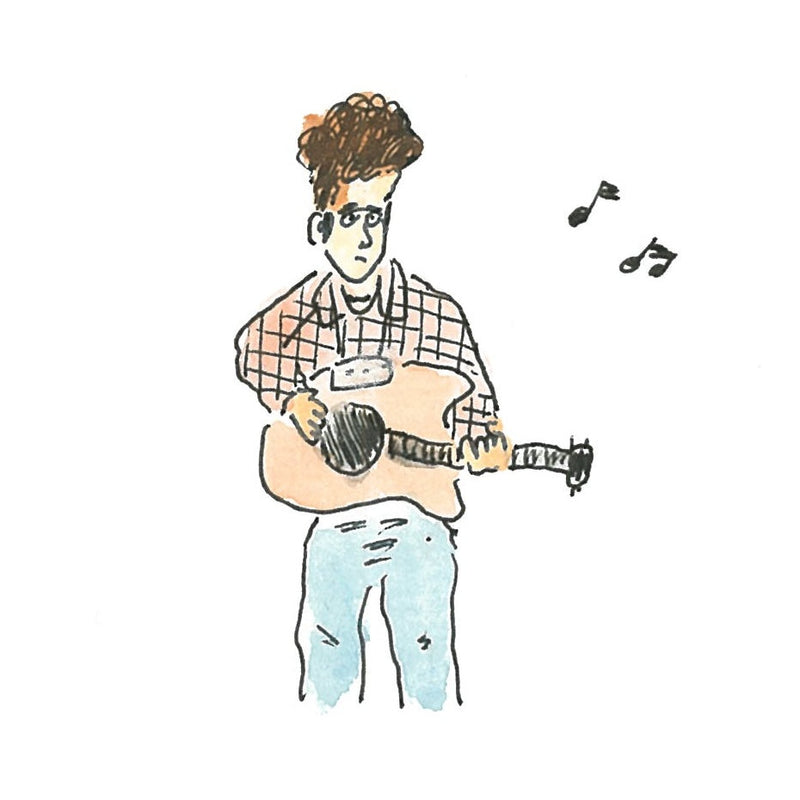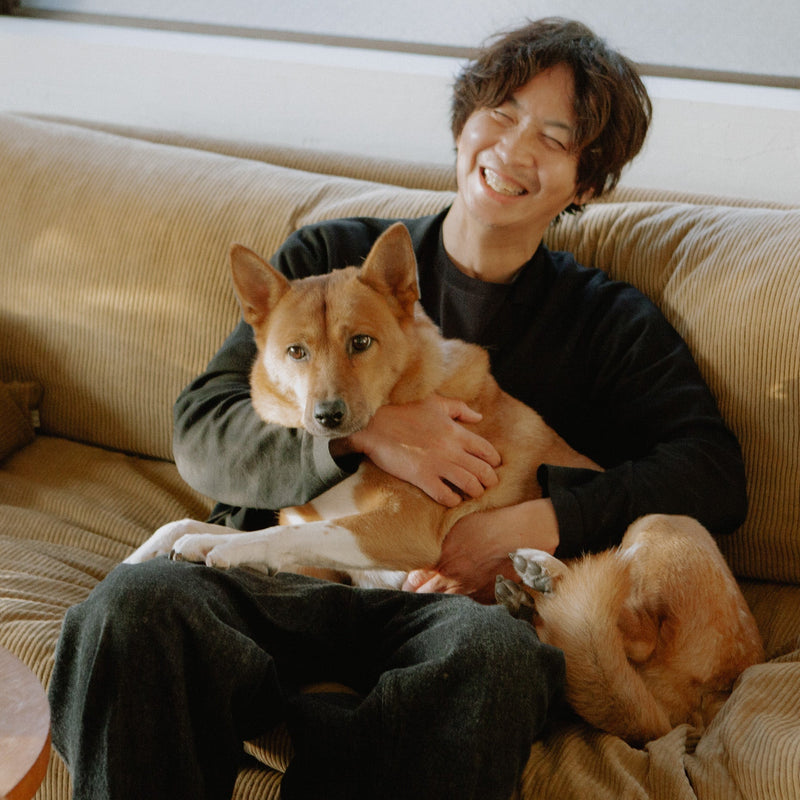Rakugo primarily depicts the Edo period. Of course, for people overseas, it is a different country and a different time. There is a person from another country who is fascinated by this rakugo that is so "far away." That person is Katsura Fukuryu, from Canada. Not satisfied with just listening to rakugo, Fukuryu also works as a rakugo performer, so we asked him about the appeal of rakugo.
HANG OUT VOL.5
One Talk One Kill
Chapter 01
HANG OUT VOL.5One Talk One Kill
A person who is not good at speaking dreams of becoming a Rakugo performer. Let's start Rakugo.
The beginning of the year is a good time to break away from your old self. If you want to be able to speak in front of people without getting nervous, why not start with rakugo? Ideally, you would be a rakugo performer who can captivate the audience with just the art of storytelling, but start by enjoying rakugo. After all, you can only become good at something if you love it.
Chapter 1: Let's ask a Rakugo performer.

Katsura Fukuryu
Originally from Canada, he came to Japan in 2001 and taught English while studying Japanese language and culture, which he was interested in. In 2011, he encountered English Rakugo, and was fascinated by the fusion of Japanese tradition and English, becoming addicted to Rakugo. Wanting to try his hand at Japanese Rakugo, he joined the Katsura Fukudanji school in October 2016, becoming Katsura Fukudanji's 11th disciple and being given the name Katsura Fukuryu. In addition to Japanese Rakugo, he has ample experience performing English Rakugo overseas, and has recently been performing sign language Rakugo as well.
YouTube is the gateway.
- In Rakugo, there are ranks such as Shinuchi, Nittsume, Maeza, etc. that can only be promoted if the master recognizes them. What stage are you at now, Fukuryu-san?
Fukuryu: As for Japanese rakugo, I've been studying it for nine years and I'm currently a futatsume. It'll be a few more years before I become a shinuchi. As for English rakugo, I'm already a shinuchi.
-First of all, what were you doing before you became a Rakugo performer?
Fukuryu: I came to Japan and worked as an English teacher for a while. Before that, I was a magician in my hometown of Canada.

-Have you ever been familiar with Rakugo?
Fukuryu: No, at that time I didn't even know the difference between Ogiri and Rakugo. One day, a friend showed me Katsura Shijaku's English Rakugo on YouTube. English Rakugo is Rakugo where the performer speaks in English, without subtitles. Katsura Shijaku is a pioneer of this. From there, my interest was instantly piqued, and I decided to join an amateur English Rakugo club. At first, I thought it would be just a hobby, but the more I did it, the more I got hooked, and I decided I wanted to become a professional. After several years of trying various things to become a professional Rakugo performer, I was lucky enough to get the chance by chance, so I decided to go for it (laughs).
-This is your first experience with English Rakugo. What was it about Rakugo that attracted you?
Fukuryu: Of course I like the humorous parts of Rakugo. But Rakugo is not just about laughter. When explaining Rakugo overseas, it is translated as sit-down comedy, the opposite of stand-up comedy. So in everyone's image, Rakugo is comedy, but in reality it is different, and I think the essence of Rakugo is in the story. Rakugo performers make people imagine a story in their heads with simple possessions, storytelling, and gestures. That's why I respect Rakugo performers.
-You play all the characters by yourself.
Fukuryu: Men, women, children, old people, and sometimes even dogs (laughs). As for the stories, some are funny, while others are tear-jerking. I think that's amazing too. Classical rakugo is about 400 years old, but it's still funny to listen to today. I like manzai and stand-up comedy, and I watch them often, but there are trends of the times, and as times change, manzai and the like may no longer seem funny. But rakugo is still funny today. In other words, it has a timeless appeal.
About the profession of Rakugoka.

-Is the photo above a scene of eating the famous "Toki Soba" soba?
Fukuryu: No, this isn't soba, it's udon. In Edo rakugo it's soba, but in Kamigata rakugo it's udon. Also, in Edo rakugo there is only a zabuton on stage, but in Kamigata rakugo they use a knee cover. Also, Kamigata rakugo tends to be performed a little more exaggeratedly, so there are many differences between Edo rakugo and Kamigata rakugo.
- I had no idea there were such small differences. Rakugo depicts Japan, but is it understood overseas?
Fukuryu: Because what makes people laugh varies from country to country and region to region, we have to come up with new and original punch lines. That's difficult. But I think the reason rakugo can be enjoyed across borders is because it depicts universal stories that transcend countries and eras.
- Rakugo is set in Japan, and in the Edo period, a long time ago. Isn't it difficult to explain it to people from overseas?
Fukuryu: That's right. So, when there are shortcomings or difficult parts, I explain them through narration, for example. That makes it smoother. What I find interesting is that, for example, when I perform classical rakugo overseas, there are differences in the images each person has. For example, if I talk about samurai, people overseas imagine samurai with blue eyes. Rakugo, unlike movies, is only imagined in the minds of each audience member, so the differences are interesting.
-How does it feel to perform Rakugo overseas?
Fukuryu: Overseas, there is a strong impression that Japanese people are good at mathematics and have advanced technology, but there is little impression that they like comedy. However, this is a good opportunity to let people know that we have a culture that has enjoyed laughter and human feelings in the form of stories for 400 years.

-Is it fun to perform Rakugo?
Fukuryu: Yes. The most fun part is going on stage. It's hard to remember the material and the manners and behavior, but it's so much fun to go on stage that it makes all the hard work worthwhile. And the best part is seeing the audience laugh.
-Is there anything you want to do in the future?
Fukuryu: It's been nine years since I started training, and in 2025 it will be my tenth year. I'd like to take on an apprentice one day. I'm currently in my second year, but my master has given me permission to take on an apprentice.
-Do you have any goals regarding the spread of English Rakugo overseas?
Fukuryu: I was actually planning to perform rakugo in 26 countries in 2020, but all of my plans were canceled due to COVID-19. I would love to get revenge.

-What's the best thing about being a Rakugo performer?
Fukuryu: I get to visit many different places in Japan through rakugo. I get to visit not only small islands and cities that I wouldn't have had to do this job, but also the countryside. When I actually go to these places, they are all amazing.
- It could simply be that it's entertaining, but is there anything positive you can gain from watching Rakugo?
Fukuryu: I think a lot of young people enjoy things like YouTube and games, but I want them to know that rakugo, which doesn't involve any technology, can be so much fun. There are ways to educate children by having fun while they learn, and rakugo is the same; you can experience a story while having fun.

Chapter 2: Let's ask the Waseda Rakugo Study Group.
Waseda University Rakugo Study Group. It is the oldest Rakugo study group in Japan, and is made up of students who strictly adhere to the traditional teaching of "Be a good audience!" and are dedicated to watching and performing Rakugo. Alumni include Sankyuu Tatsuo, the mastermind behind "Shibuya Rakugo". We asked students who are avid Rakugo viewers about the appeal and tips of learning Rakugo, and three Rakugo performers to watch now.

We spoke to Yoshimura-san, a member of the Waseda University Rakugo Study Group. He also performs Rakugo.
It has to be raw after all.
-Where is your favorite venue to see Rakugo in Tokyo?
Rakugo Research: In Tokyo, there are four major theaters where yose are held almost every day: Suzumoto Engeijo in Ueno, Suehirotei in Shinjuku, Asakusa Engei Hall, Ikebukuro Engeijo, and Shibuya Rakugo, for a total of five locations.
-Is it better to see it live rather than on video?
Rakugo Research: I often hear this, but live performances are much more impressive. It's easier to see finger movements, detailed eye contact, and mannerisms from a distance, like a comedy hall. Videos are flat, so it's easy to get distracted. I can also learn from the Rakugoka's techniques of how to create an atmosphere in the audience.
-I heard that Waseda's Rakugo club calls itself "rakken" instead of "ochiken."
Rakugo Club: Yes. That's because the Waseda Rakugo Club originally placed emphasis on appreciation rather than performance. We called ourselves "Rakken" to differentiate ourselves from the former performance-only club (commonly known as "Ochiken"). Now, both those who want to appreciate and those who want to perform join, but we're still called "Rakken" as a remnant of the past.
First of all, numbers matter.
- First, let's talk about appreciation. What do you value most?
Rakugo Research Club: The only thing that has been said in the Rakugo Research Club for a long time is "Be a good rakugo audience!" We have always been told to go and see as many as possible. Senior members give us lists of masters to see, and we also proactively go and see rakugo performers who are currently performing at vaudeville halls. This way, our knowledge naturally increases, and we develop our own standards for what constitutes "good rakugo." Then, we feel like we are finally ready to perform rakugo.
-What do students talk about when watching Rakugo?
Rakugo Research: At first, we start with the impression that the story was really good. Then, we think about why it was good, and then we pay attention to how the script was cut or stretched out. A yose performance is about 15 minutes long, so individuality comes out in which parts of the story are cut or stretched out. We also think that something was added at the end to tie up loose ends. We analyze the script in this way and discuss it together. Next, we often look at the technique, such as the mannerisms, facial expressions, and vocal quality.
-What do you think is good about having come into contact with Rakugo?
Rakugo: I asked around within the Rakugo club, but it seems that they had the opportunity to experience classical performing arts such as Kabuki and Joruri. I think that being able to experience classic works of the past, such as "Chushingura," is a benefit that is hard to find in other circles.
There are many benefits to public speaking.
- Now, about live performances. Are there any major benefits to performing Rakugo live?
Rakugo Research: That's right. What I feel when I perform it is that the story development and the arrangement of lines in Rakugo are extremely useful as templates for communicating something to people. Many students say that by learning Rakugo, their ability to explain things, such as story construction and composition, has improved.
-It seems like it will also help you gain courage to speak in public.
Rakugo Research: For example, when you perform Rakugo in front of an audience, it's important to pay close attention to the audience's reaction. If the audience seems to be getting bored, try to tell them something interesting, or if they don't seem to understand the word, maybe add a little explanation. So I think I've really improved my ability to change my approach while watching the audience's reaction.
-Developing these skills while you're a student will likely be useful in society as well.
Rakugo Research: When multiple people perform rakugo at a vaudeville show, the person in front will talk about what kind of material they used, or the next person will pick up on the material the previous person mentioned in their opening remarks and relate it to the opening remarks. I think that the flexibility required to decide what is expected of you and where you stand in your interactions with other people is useful in real life too.




